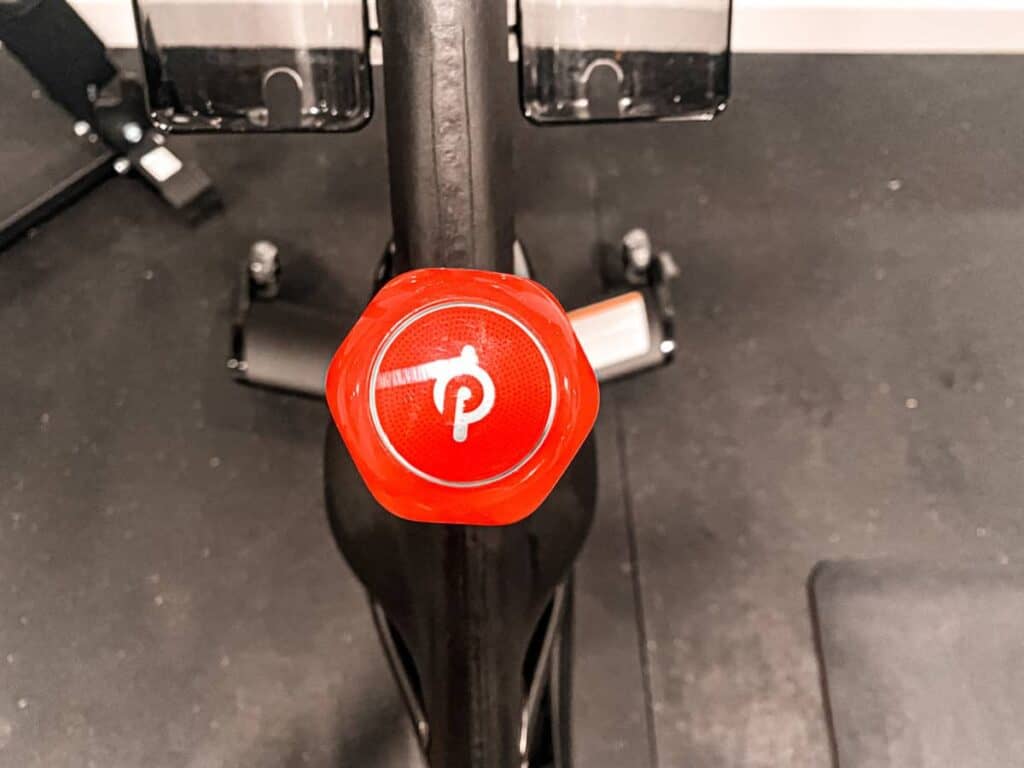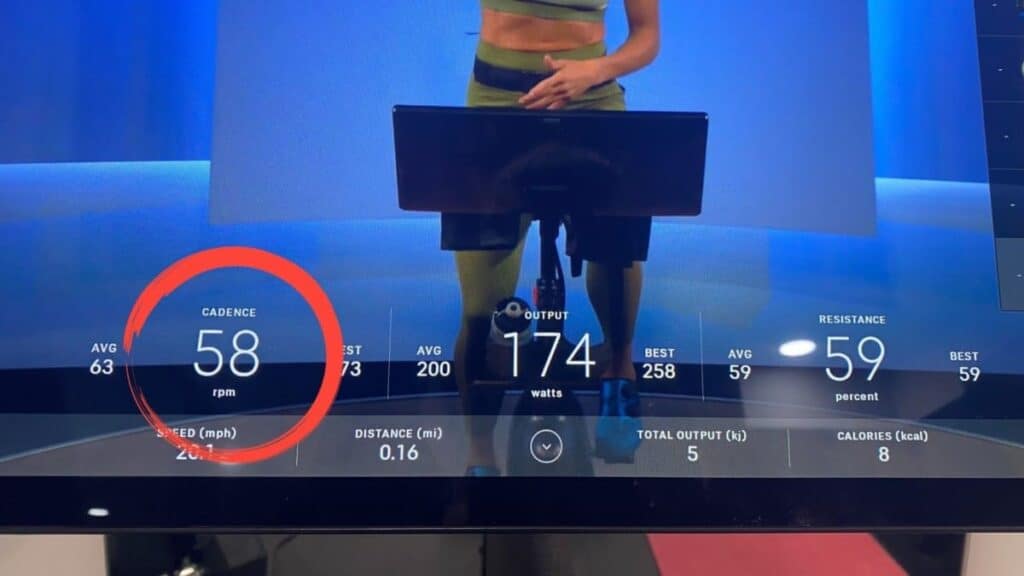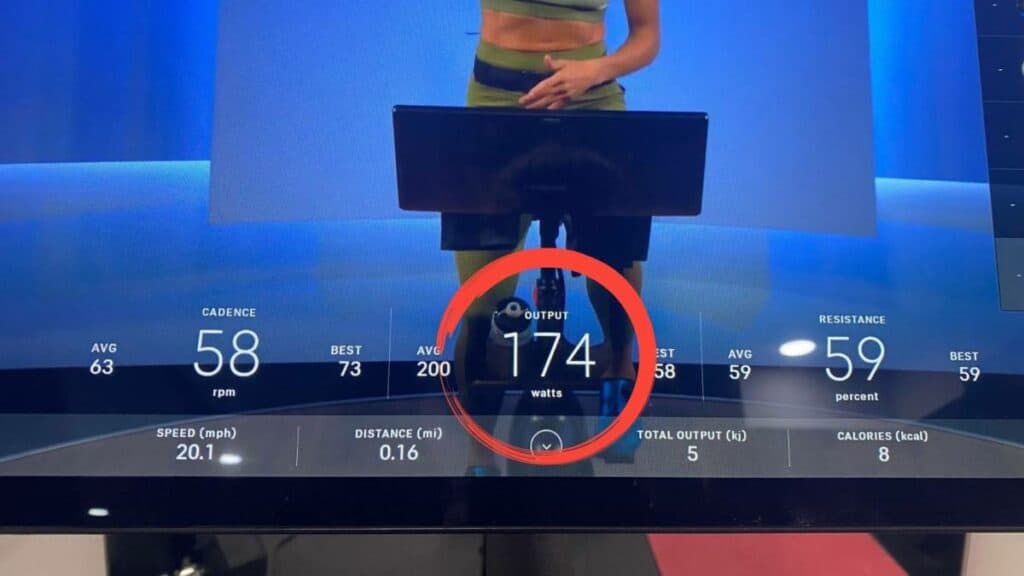You’ve been religiously cycling on your Peloton for weeks (for some people, even months) and are hoping to jump into an advanced class; however, you get obliterated and can’t walk for the next few days when you do. How do you tell if you’re ready for those advanced classes?
As a general rule, you can move to the Advanced classes on the Peloton when you can cycle at a constant resistance of approximately 65% with an elevated heart rate of 75% over an extended period of time (30 minutes or more) and recover quickly. Weight should not be an indicator for progressing.
If you think that there is one specific way to tell if you’re fit or not, then that could be the reason you are not progressing to an advanced level. Find out how to know if you are getting fitter using the Peloton bike metrics and your body’s own physiology.
Moving From Beginner To Advanced On The Peloton Bike

There is no one answer to give regarding this question. This is because Peloton is a form of exercise, and fitness levels vary from person to person.
For example, a person in their twenties may be able to get fitter much faster than an individual in their forties; hence you can’t consider time.
One person may be more capable of cycling in terms of leg strength and endurance than another, so you cannot include resistance (to a degree). For example, a cyclist may be advanced and is good at long endurance rides while another is more capable of doing strenuous hills.
So how exactly do you tell when you are moving to an advanced level? Well, the metrics on the App should tell you, right?
What Metrics Does The Peloton Cover?
There are three metrics on the Peloton that track your performance and show you your progress, and they are;
- Resistance – displayed as a percentage
- Cadence – showed as revolutions per minute
- Power output – measured in watts
We touched on resistance, and indeed if your resistance is high and you can cycle for hours on end, then you are indeed at an advanced level. However, for the average person who is cycling to get fitter or lose some weight, this is not the goal.
Resistance

If we have to go by fitness levels, then an advanced cyclist would be able to push at approximately 65% of their max resistance for an extended duration. Typically this would be between 30 minutes and one hour.
The aerobic cardiovascular system is working in this range, increasing heart strength, lung capacity, and overall endurance. Take note that your heart rate at this level should be working at approximately 70% of its maximum value for this extended period of time.
To quickly work out your max heart rate, you will take 220 (a young, healthy heart’s maximum heart rate) and minus 1 for each year of your age. For example, if you are 20 years old, then you will take 220 and subtract 20 from it, giving you your maximum heart rate of 200bpm (beats per minute). This is your maximum (100%). You will then work out 70% from that.
This is one way to tell if you are at an advanced level (fit) that utilizes your body’s own fitness capacity. If you find that your heart rate is elevated above this, then either you are pushing too hard, are doing some form of interval training such as HIIT, or you are not that physically fit.
At these levels, you are using the anaerobic energy system, which is not able to process oxygen fast enough which in turn produces lactic acid build-up and the breakdown of proteins (muscle).
Cadence

By using cadence alone, you will not be able to tell if you are moving to an advanced level. This is because you could essentially be cycling with no resistance and pedaling 200 times a minute.
You’ll need to watch your cadence levels and compare them over time with your other prior levels at higher resistances. If your cadence metrics show an increase at higher resistance levels over time, you can generally assume that you are getting more fit.
This should be used in conjunction with measuring your heart rate over time.
Power output

Power output is similar to cadence in that you will need to measure your power output against resistance levels over time.
For example, Suppose you are cycling at 50% of your max resistance and proceed to do that for 4 months. In that case, you will get fitter, and your power output may increase, but this does not mean you are at an advanced level because your body is not working at an advanced level capacity.
Hence, you will need to see whether your power output and resistance have increased over time.
When you have measured these metrics and come to the result of pushing resistance at approximately 65% of your max while having an elevated heart rate of 70% of your heart’s maximum, you will be sure that you are at an advanced level.
It would be wise to remember that advanced levels are different for everyone, and one person’s advanced level may be that of a Tour de France cyclist while another is that of a typical fit individual.
Moreover, the way we are calculating if you are able to move to an advanced level is based on your own body’s physiology and not that of specific subjective characteristics.
More Signs For Moving From Beginner To Advanced On A Peloton
Beginners will typically not be able to do more than ten to twenty-minute rides in the beginning because, again, the body will be overexerting itself, and their heart rate will be elevated, making them tired.
One sign you are getting fitter and are perhaps able to move to more advanced classes is when you can cycle for more extended periods and are able to recover.
Please don’t fool yourself into thinking you are an advanced cyclist because you are able to make it through an advanced class perhaps but then are bedridden due to aches and pains. Endurance and recovery are the keys to knowing how fit you are and what level you can progress towards.
Factors You Should Not Consider

Many individuals think that they will be fit (or fit enough) and can move to an advanced class if they are thin. Conversely, many overweight individuals believe they are not fit enough and can’t move to advanced classes. This is not the case.
Weight is the body’s way of storing energy. Many very fit individuals are thin because when exercising for extended periods of time (aerobic exercise), the body will burn a large amount of fat, but this does not mean that an overweight person has not built up their cardiovascular system to be at an advanced level. It just means that they have not burnt away the body’s excess stored energy.
They may have been exercising for months already and have greatly increased their endurance levels, and as such, weight should not be considered an indication of whether you are able to move from beginner to advanced.
Conclusion
We discovered that there is a specific way to figure out if you are able to move from a beginner level to an advanced level on the Peloton. However, it is not measurable with defined parameters. It requires your body’s own endurance system to be at a specific level.
This is cycling 65% of your maximum resistance (which will increase over time as you get fitter) at a 70% elevated heart rate for an extended period of time (30 minutes or more).
Thus to determine if you are able to move from beginner to advanced, keep in mind the factors that you will need to consider in terms of your body and how it works and not, how hard you can push if you are thin, or by measuring yourself to other individuals.





